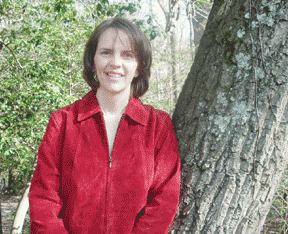Bay Weekly Conversations
What You Can Do to Improve Your Home Environment
Green Coach Sandy Neville talks with Margaret Tearman
Sandy Neville has a job for the times. She’s a green coach and building consultant. That means it’s her business to guide clients to make the connection between their health, the environment and the way buildings are built and maintained. Certified by the United States Green Building Council’s Leadership in Energy and Environmental Design, she has been coaching clients since 2005 with her business, Building Connections.
Bay Weekly What was your motivation to go green?
Sandy Neville Personal health issues related to my exposure to pesticides about 20 years ago. I became seriously ill, and the accumulation of the chemicals in my house, like new carpeting off-gassing, made it worse. My illness forced me to find non-toxic products for myself, things like healthy paints and alternatives to carpet. I had to find products to survive in this toxic world.
Bay Weekly Who are your clients?
Sandy Neville I work with homeowners, and I’ve been working with schools. I’ve consulted with St. Mary’s County on the new elementary school being built in Wildwood. It’s being built as a teaching tool on how to build green buildings. I’ve also worked with the Southern Maryland Higher Education Center to help them come up to the Green Building’s Leadership and Environmental Design gold certification. Because it’s a state-owned building, it has to at least meet LEED’s silver standard. We’re working to recycle and to eliminate toxic cleaners from their cleaning practices and ventilation.
Bay Weekly Explain the LEED rating system.
Sandy Neville The Leadership in Energy and Environmental Design Green Building Rating System was developed by the U.S. Green Building Council. It provides standards for environmentally sustainable construction. Maryland has passed a bill requiring that all new or renovated state government buildings and schools must be constructed as energy-efficient buildings to meet silver level.
Bay Weekly What can homeowners do to improve their home environment?
Sandy Neville A lot, but it needs to be done in a sensible manner. For example, if your 10-year-old appliances need to be replaced, consider buying Energy Star-rated appliances. When it comes time to replace flooring, choose sustainable options, like bamboo or cork. I don’t recommend throwing away a perfectly good vinyl floor unless it’s making you sick. Vinyl doesn’t break down in landfills. When it comes to cleaning fluids, integrate healthy chemicals into your space.
But I want to emphasize the importance of making informed choices. Bamboo floors are a sustainable option because it’s so fast growing, but check where it’s coming from. Because of the high demand, some countries are clear cutting old-growth forests to grow bamboo.
Bay Weekly How about re-using building materials?
Sandy Neville Absolutely. Reusing reclaimed materials is really sustainable, and salvaged materials can lend charm and a quality of workmanship not always found in new manufacturing. But it can be expensive. For example, salvaged wood is usually the most expensive wood available. Unfortunately, the average homeowner can’t afford many of these products.
An idea that is catching on is cradle-to-cradle use and manufacturing. In 2002, William McDonough, an architect, and Michael Brungart, a German chemist, wrote a book, Cradle to Cradle: Remaking the Way We Make Things. Their main point is that we can be “wasteful” — if the products we produce go completely back into nature or are completely reborn as new products, rather than end up in a landfill. It is the ultimate re-using.
Bay Weekly Why are sustainable or green products more expensive than traditional ones?
Sandy Neville We’re fascinated by the whole green thing. People expect to pay more. I hope that as society creates a demand for these products, like we did with organic food, so they will become more affordable. It took a while, but prices came down, and organic food became more readily available. Hopefully, the green building industry will follow suit. Eventually, supply and demand should equalize cost.
Bay Weekly With the movement toward sustainable and eco-friendly products, is there a danger of being green-washed?
Sandy Neville Individuals have to make an informed choice and not purchase a product because of the way it’s packaged. There is a trend, a bad one, to market products to appear to be natural when they’re not. One leading processed food maker recently changed its packaging and introduced a green-colored label stating the product is “naturally low fat.” The product has always been low fat, but marketing surveys have shown consumers will choose a product simply because it is labeled natural and packaged in earth tone colors, like brown and green. We have to be educated consumers.
Bay Weekly Is this just a trend or do you think sustainable practices are just catching on and will continue?
Sandy Neville There are a lot of gray areas, and technology needs to be improved. Light bulbs are a good example. President George W. Bush has signed a bill stating that by 2012 incandescent bulbs will no longer be manufactured. California has mandated this standard by 2010. This gives manufacturers time to improve technology. Fluorescents are made with small amounts of mercury that shouldn’t go into landfills. And the lighting is not lasting as long as advertised. LED technology is taking off because they last so long. But LED lights are expensive, so there is work to be done on cost efficiency. Standards are constantly being re-evaluated. It’s a work in progress.
I hope it’s not a trend. We have to stay focused and not be such a throw-away society. We need to try to buy and use less.
We can do simple things that make common sense — as our parents did — like reusing those plastic baggies.
If we use things that are healthy for us, they will not likely harm the environment.
At 7pm on April 17, Sandy Neville brings her ideas to Calvert Marine Museum in a Green Kitchens Workshop: www.calvertmarinemuseum.org.